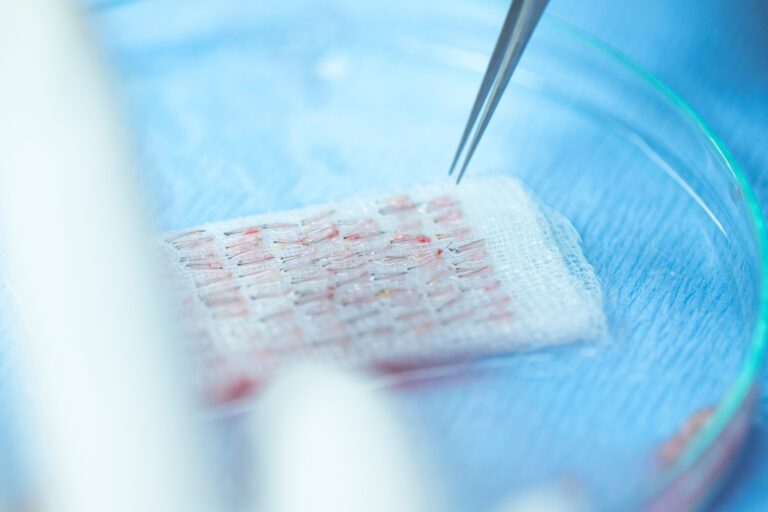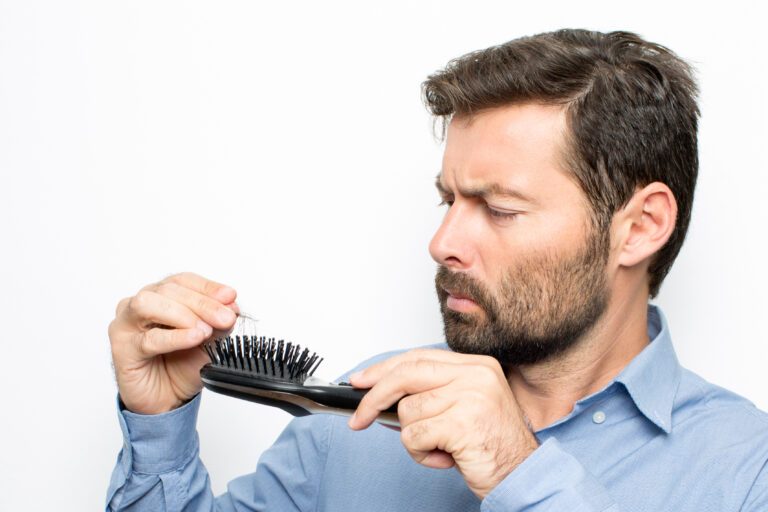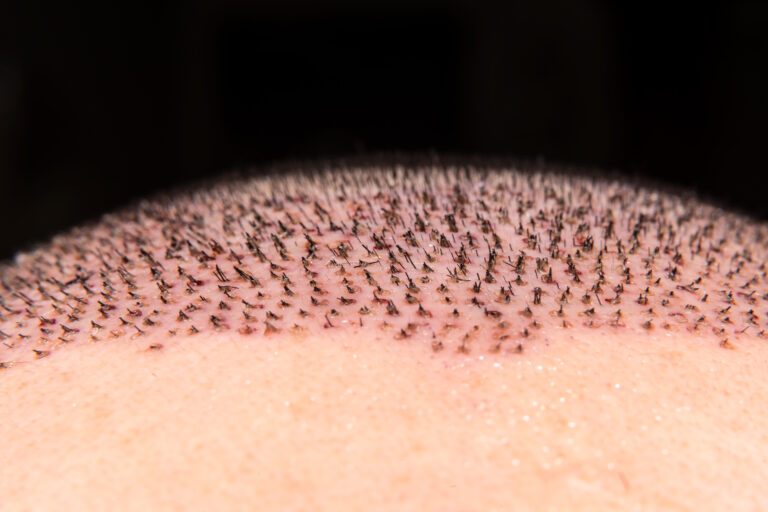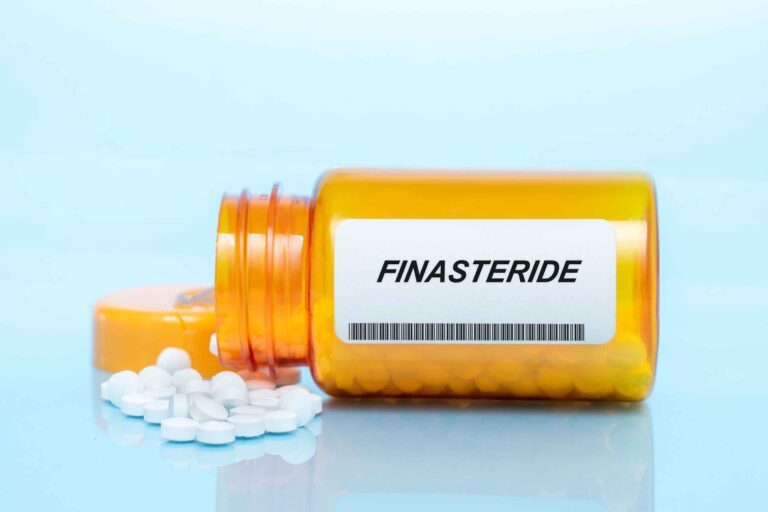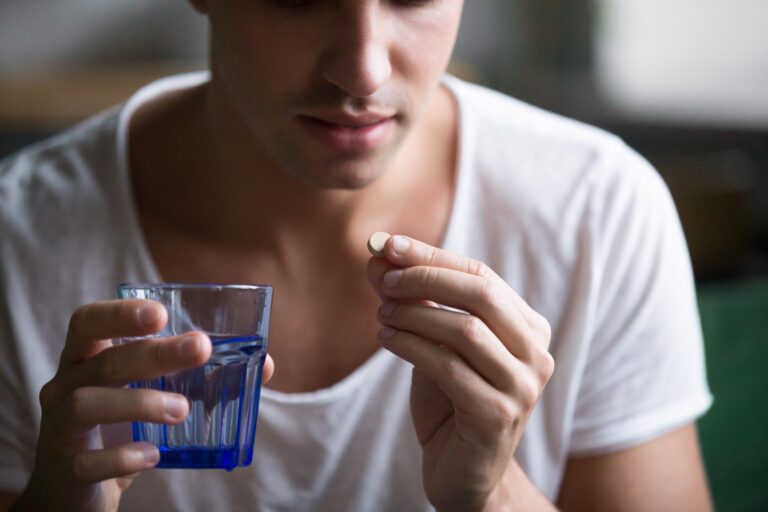Does Finasteride Regrow Hair? This Is What We Know
Finasteride is often touted for its restorative powers in male pattern baldness. It prevents hair loss, promotes hair growth, and thickens the overall volume of hair.
These qualities sound good for people in the early stage of pattern baldness, but what about those with bald spots? Does Finasteride regrow hair in these areas?
In this article, we’ll discuss everything we know about Finasteride regrowth, including its effectiveness, regrowth timeline, and potential side effects.
Let’s get right into it!
What Is Finasteride?
Finasteride is a 5-alpha reductase inhibitor that treats hair loss and Benign Prostatic Hyperplasia (BPH or enlarged prostate) in adult men. For women, it can be used to treat excessive hair growth caused by Polycystic Ovary Syndrome (PCOS).
Sold under the brand names Propecia and Proscar, Finasteride works by preventing the body from creating the androgen hormone dihydrotestosterone (DHT).
DHT is only beneficial to growing bodies. Once a man reaches sexual maturity, DHT becomes more of a hindrance than a necessity. Excessive DHT is one of the primary causes of male pattern baldness and prostate problems in men and is therefore considered a “bad” hormone later in life.
Enter Finasteride, one of the most effective DHT blockers in the market. By preventing the conversion of testosterone to DHT, it prevents hair loss at its source.
According to research, Finasteride reduces DHT levels by a respectable 70%. For most men, this is enough to prevent ongoing hair loss.
But there’s a catch: when you take Finasteride, you’re in it for the long haul. Its effects only last as long as it’s taken. When it’s stopped, DHT production will resume and hair will once again start to fall out.
Can Propecia Regrow Hair?
Though mostly taken to prevent hair loss, Finasteride can also help you regrow hair around the hairline and other areas affected by male pattern baldness.
It’s important to note that Finasteride isn’t a hair growth medication; at least, not by definition. It doesn’t directly trigger growth. Rather, it acts as a catalyst. It helps you grow back hair by getting to the root of the problem: the DHT.
This means that it may not work on people suffering from hair loss caused by permanent hair follicle damage (cicatricial alopecia), genetics, and underlying health conditions.
Finasteride works best on individuals with male (and female) pattern baldness, though it can take approximately 12 weeks to show results. It won’t work faster or better if you take more than one tablet a day, so patience is key.
If you’ve not experienced any positive results after a year of treatment, consult your doctor for advice. Just remember that Finasteride doesn’t only grow hair but also prevents further hair loss. If you don’t experience regrowth, the medication might be preventing hair loss during the year.
Does Finasteride Thicken Existing Hair?
No medication can thicken existing hair, not even Finasteride. Once hair protrudes from the follicle, the hair can’t grow or expand to become thicker.
Thickening sprays, shampoos, and conditioners use special polymers to plump up hair and make them look fuller, but the effect is temporary. It wears off after a couple of days.
If you have thin hair, don’t be discouraged. Although Finasteride doesn’t thicken existing hair, it can thicken new growth.
According to a four-year study led by dermatologist Dr. Vera H. Price, Finasteride showed significant improvement in hair thickness, hair count, and hair loss after two years of treatment.
The study observed a 20% to 45% increase in hair thickness in men with pattern baldness.
By taking Finasteride consistently for at least 12 months, hair can grow stronger, thicker, and faster than before.
Can Finasteride Regrow Hairline?
Hair loss varies in severity from one person to another, so there’s no guarantee that Finasteride will regrow a receding hairline.
Generally, it’s best to think of Finasteride as a shield against further hair loss rather than a guaranteed way to grow hair you’ve already lost.
With that said, several studies and photographic accounts of long-term users show that Finasteride can significantly increase hair count in the frontal scalp region. Therefore, it’s safe to assume that, with consistent use, you can expect some improvements in your hairline region.
In a study that evaluated the efficacy of Finasteride in frontal male pattern baldness, 66 to 70% of men showed notable hair growth on their hairline in the first 12 months of regular use.
Another study concluded that Finasteride showed a significant increase in hair count in the frontal scalp, which was maintained or improved throughout the second year of the study.
If you start seeing signs of a receding hairline, Finasteride may help treat and prevent it from getting worse. But if you’ve had a receding hairline for a while, or already lost a lot of hair around your hairline, Finasteride may help but not completely restore it.
Does Finasteride Work Forever?
Finasteride is a long-term medication. It works as long as you take it. People have taken Finasteride for 5, 10, and 20 years to maintain the thickness and volume of their hair.
Studies found that more than 90% of men experience continued improvement in hair growth or prevention of further hair loss when taken over 10 years.
Patients that show improvements after the first year of treatment are more likely to maintain their hair growth with long-term Finasteride use.
On the other hand, patients with unchanged results after the first year are less likely to experience positive improvements in hair growth.
Therefore, if you’re considering taking Finasteride as part of your daily medication, a year is a good time to reassess whether continued use is beneficial.
What Is Finasteride Shedding? Should You Be Concerned?
Two months after taking Finasteride, you may experience a phenomenon called Finasteride Shedding.
Though it seems counterintuitive, shedding is a normal part of the Finasteride hair growth process. Experts have yet to pinpoint the exact cause of the shedding, but some theorize that it may be associated with the disruption of the hair growth cycle.
To understand why this is happening, let us explain how the hair growth cycle works.
Brief Overview of the Hair Growth Cycle
Hair grows in a multi-phase hair cycle that involves independent periods of growth, regression, rest, and hair fall. These phases are called anagen, catagen, telogen, and exogen respectively.
The anagen phase is the longest of all four phases, lasting about three to five years. During this phase, your hair follicles push out hair that will continue to grow until they’re either cut or reach the end of their lifespan.
The catagen phase starts as soon as the anagen phase ends. As opposed to the anagen phase, it’s the shortest of all phases, lasting only 10 days. In this phase, follicles shrink and hair growth stops.
Then comes the telogen phase, which lasts around three months. Hairs neither grow nor fall out during this phase, but new hairs start to form in the follicles.
And, finally, we have the exogen phase: the period in which hair starts to fall out from the scalp. The cycle then starts all over again.
Why Does Finasteride Cause Shedding, Though?
The answer to this question is simple: Finasteride doesn’t care about the growth cycle. At least, not initially.
Instead of following the four-step cycle as intended, it skips ahead to the growth phase and begins the process of pumping out new hair. But before it can do that, it needs to make space for new hair follicles.
This is why hair falls out. Finasteride forces hair to enter the exogen phase before it’s done with the catagen and telogen phases.
The good news here is that this shedding is temporary and lasts only two weeks. The shedding can occur two to three months into the treatment, but some people experience it as early as two weeks or as late as six months into the treatment.
It’s important to recognize Finasteride Shedding and abnormal shedding. If you shed an excessive amount (i.e., more than 200 hairs per day) a few days into the treatment, you might want to contact your doctor to ensure that you’re not experiencing an adverse reaction to the medication.
The same is said if the shedding period lasts longer than two weeks. The medication might be reacting poorly to your body chemistry, causing excessive hair loss.
Finasteride Regrowth Timeline: Results In 3, 6, 9, and 12 Months
As with most hair treatments, Finasteride takes a bit of time to work. You’ll notice a gradual, steady improvement in the first few months of the treatment and final growth after one year.
1 to 3 Months
Between months one to three, you’ll likely notice little to no improvement in your hair. Your hairline, crown, and bald spots will look the same or sometimes worse due to Finasteride Shedding. Don’t be discouraged; continue taking the medication as prescribed.
3 to 6 Months
In three to six months, you’ll start to notice some improvement in your problem areas, particularly in the crown and hairline. The improvements won’t be significant, but they won’t be insignificant, either.
Changes within the first six months of treatment are a good sign that Finasteride is working for you.
6 to 9 Months
Most men notice desirable improvements in months six to nine. At this point, you’ll witness a measurable increase in hair count and a reduction in hair loss. Your hair will appear fuller and thicker, and you’ll enjoy a noticeable regrowth of hair.
Even if you’re happy with the results, don’t stop taking the medication. If you stop, you’ll experience hair loss yet again.
If you’re not seeing any regrowth after nine months of use, speak to your doctor about possible causes and alternative treatments like hair transplant. The doctor may also prescribe another hair loss medication like Minoxidil (Rogaine) to improve results.
9 to 12 Months
By the ninth month, you should see a notable improvement in your hair. Your hairline and crown should look thicker and fuller, and most, if not all, of your hair follicles, should have grown back. You won’t experience thinning and/or shedding any longer, either.
The 12th month marks the final results of the Finasteride treatment. Improvements won’t stop after the first year, but they’ll significantly slow down.
If you’re not happy with the results after 12 months, you may want to consider a different hair treatment.
12 Months and Beyond
After 12 months, you won’t see significant improvement with the continued use of Finasteride. However, this doesn’t mean that you should stop the treatment.
Remember: Finasteride is first and foremost a hair loss prevention medication. It might not visually improve the appearance of your hair after you hit the 12-month mark, but it’ll maintain that full head of hair for years to come.
A lot of men take Finasteride for more than 10 years and experience no adverse effects. If you’re satisfied with the results, the doctor might reduce the dose to 1 to 3 mg per week as opposed to 1 mg per day.
What Are the Side Effects of Finasteride?
Like most medications, Finasteride can cause unwanted side effects. The side effects are as follows:
- Decreased interest in sexual intercourse
- Reduction of semen released during sex
- Erectile dysfunction
- Problems with ejaculation
- Cold sweats
- Chills
- Lightheadedness when getting up from a sitting or lying position
These side effects are extremely rare, happening to less than 2% of men. If they do happen, they usually disappear within a few days or a couple of weeks as the body gets used to the new medication.
If the symptoms don’t get better three weeks into the treatment, contact your doctor for an alternative medicine. The doctor may prescribe topical Finasteride to mitigate and eliminate these symptoms.
On the other hand, if you experience bloating, sweating of the face, redness of the skin, trouble breathing, or tingling of the hands or feet, get checked up by a professional straight away. You might be experiencing an allergic reaction to Finasteride.
Precautions When Taking Finasteride
Finasteride shouldn’t be taken by pregnant transmen, men with pregnant partners, and men trying for a baby.
Due to its DHT-blocking characteristics, Finasteride can cause severe abnormalities in a developing male fetus.
Therefore, pregnant women shouldn’t be exposed to Finasteride. They mustn’t handle crushed tablets or topical solutions, or have sexual intercourse with a man taking Finasteride.
Women should also never use Finasteride while breastfeeding, as Finasteride may potentially pass through breast milk.
Similarly, Finasteride shouldn’t be taken by men who have or have had prostate cancer, as it may cause them to relapse or further worsen the condition.
Finally, this medication isn’t for people with liver disease.
Like most drugs, Finasteride is processed in the liver. People with liver issues process the drug at a much slower pace, leading to a buildup of the drug in the body and thereby increasing the risk of side effects.
Is Topical Finasteride Better Than Oral Finasteride for Growing Hair?
Oral Finasteride and Topical Finasteride have more or less the same effectiveness.
According to studies, men who applied 1 ml of Topical Finasteride a week showed similar results to men taking 1 ml of Oral Finasteride every day for seven days.
Another study shows that Oral Finasteride reduced male pattern baldness by 62 to 72%, whereas Topical Finasteride reduced it by 68 to 75%.
In practice, the ~5% difference doesn’t warrant switching from Oral to Topical. Topical formulations aren’t as accessible as Finasteride tablets and often more expensive, so most stick with tablets to save themselves the hassle of sourcing the medication.
The one big advantage of Topical Finasteride is that it doesn’t cause undesirable sexual side effects. Since it doesn’t reduce blood DHT levels as much as Oral Finasteride, there’s less chance that men will experience problems with sex.
It’s also good for men who dislike taking oral medications for extended periods, or those who take medications that don’t agree with Oral Finasteride.
That said, Topical Finasteride doesn’t come without its own side effects. Most of these side effects are skin-related, such as:
- Scalp eczema
- Scalp pruritus (itchiness or irritation of the scalp)
- Erythema (inflammation of the scalp)
- Dandruff
- Burning sensation
Often, these side effects occur in a localized area and disappear within a few days or weeks of continuous use. If symptoms persist, patients should discontinue the medication.
Final Thoughts
The answer to the question, “Does Finasteride regrow hair?” is a resounding yes!
Dozens of studies prove the effectiveness of Finasteride in restoring and maintaining hair, especially in patients with male pattern baldness. Treatment length varies from one person to another but results usually appear after three to six months of regular use.
Keep in mind that Finasteride is more of a hair loss prevention medication rather than a hair growth medication. If you have severe pattern baldness or medical issues that result in permanent hair loss, Finasteride might not be for you.
In these circumstances, it’s wise to search for alternative treatments like hair transplants.


